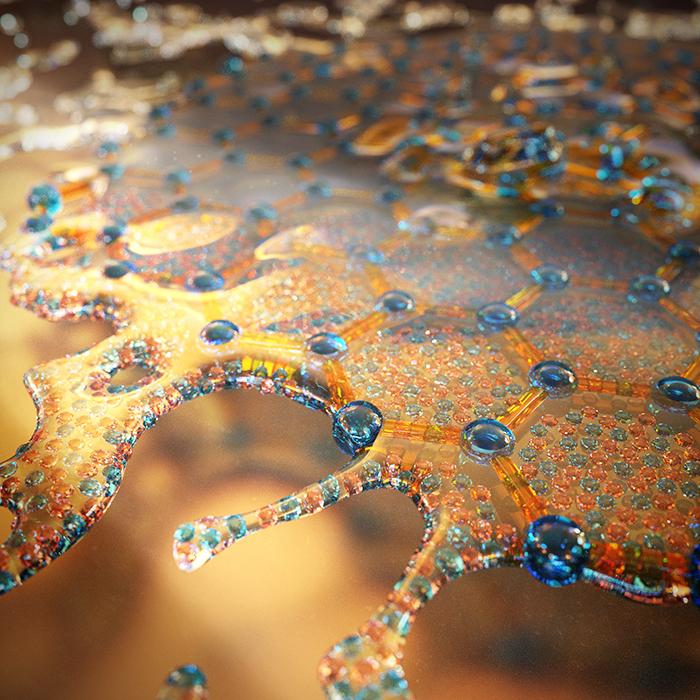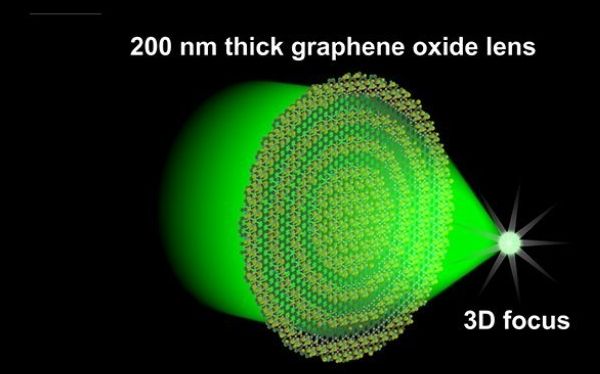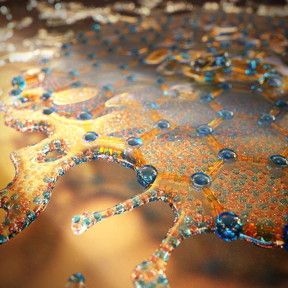The nanoscale coating that’s at least 95% air repels the broadest range of liquids of any material in its class, causing them to bounce off the treated surface, according to the University of Michigan engineering researchers who developed it.
Category: materials – Page 298
#sweet!
Electrons which act like slow-pouring honey have been observed for the first time in graphene, prompting a new approach to fundamental physics.
Electrons are known to move through metals like bullets being reflected only by imperfections, but in graphene they move like in a very viscous liquid, University of Manchester researchers have found.
The possibility of a highly viscous flow of electrons in metals was predicted several decades ago but despite numerous efforts never observed, until now as reported in the journal Science.
This agreement places Oxford in a very nice position.
Quantum transport measurements are widely used in characterising new materials and devices for emerging quantum technology applications such as quantum information processing (QIP), quantum computing (QC) and quantum sensors. Such devices hold the potential to revolutionise future technology in high performance computing and sensing in the same way that semiconductors and the transistor did over half a century ago.
Physicists have long used standard electrical transport measurements such as resistivity, conductance and the Hall effect to gain information on the electronic properties and structure of materials. Now quantum transport measurements such as the quantum Hall effect (QHE) and fractional quantum Hall effect (FQHE) in two-dimensional electron gases (2DEG) and topological insulators – along with a range of other more complex measurements – inform researchers on material properties with quantum mechanical effects.
The ultra low temperatures and high magnetic fields provided by Oxford Instruments’ TritonTM dilution refrigerator make it a key research tool in revealing the quantum properties of many materials of interest. SPECS’ Nanonis Tramea QTMS is a natural complementary partner to the Triton, with its fast, multi-channel measurements.
This 2D material is only one atom thick and allows electrical charges to move through it much faster, which would make computers remarkably faster.
I have mentioned in my previous posts about the Quantum Internet work that Los Alamos has been leading; today Los Alamos has been awarded a patent on their Quantum Communication (QC) Optical Fiber.
Whitewood received a Notice of Allowance for a patent application that addresses issues that arise when employing quantum communications techniques to share cryptographic material over fiber networks.
ArcPoint Strategic Communications.
Researchers in Japan have found a way to make the ‘wonder material’ graphene superconductive — which means electricity can flow through it with zero resistance. The new property adds to graphene’s already impressive list of attributes, like the fact that it’s stronger than steel, harder than diamond, and incredibly flexible.
But superconductivity is a big deal, even for graphene, because when electricity can flow without resistance, it can lead to significantly more efficient electronic devices, not to mention power lines. Right now, energy companies are losing about 7 percent of their energy as heat as a result of resistance in the grid.
Before you get too excited, this demonstration of superconductivity in graphene occurred at a super cold −269 degrees Celsius, so we’re not going to be making power lines out of graphene any time soon.
With the success of Graphene as a material for BMI plus the new micro stints that can travel through blood cells to the brain; prosthetic technology is only going to continue to improve to maybe even a point where some athletes may wish to have physical and endurance capabilities improved through this type of technology if it is approved and allowed by the various athletic associations.
A team of researchers has demonstrated the first-ever successful prosthetic arm that can control individual fingers with thoughts.

A radical discovery by researchers at Harvard and Raytheon BBN Technology about graphene’s hidden properties could lead to a model system to explore exotic phenomena like black holes and high-energy plasmas, as well as novel thermoelectric devices.
In a paper published Feb. 11 in Science, the researchers document their discovery of electrons in graphene behaving like a fluid. To make this observation, the team improved methods to create ultra-clean graphene and developed a new way to measure its thermal conductivity.
Researchers have used graphene to create a lens that’s so flat, it’s 300 times thinner than a sheet of paper and weighs just 1 microgram. That means it’s small enough to split a beam of single photons — something that’s going to be crucial if we ever want to develop optical computers that process data at the speed of light.
These optical computers require devices called photonic chips, which store information as photons rather than electrons, and allow that information to move at light speed — and people are pretty excited about it. NASA is already using it, and the technology is getting more and more impressive. But there are still some limitations, and one of those is having lenses thin enough to split beams of light and divert them around the chip.
Attempts to make these lenses in the past have required expensive and impractical materials such as gold, but researchers at Swinburne University of Technology in Australia have been working on a solution, and they’ve managed to produce a lens using graphene oxide that’s not only thin enough to overcome the diffraction limit, but is also cheap, strong, flexible, and easy to produce.
Liquid metal.
Abstract: Graphene is going to change the world — or so we’ve been told.
Since its discovery a decade ago, scientists and tech gurus have hailed graphene as the wonder material that could replace silicon in electronics, increase the efficiency of batteries, the durability and conductivity of touch screens and pave the way for cheap thermal electric energy, among many other things.








